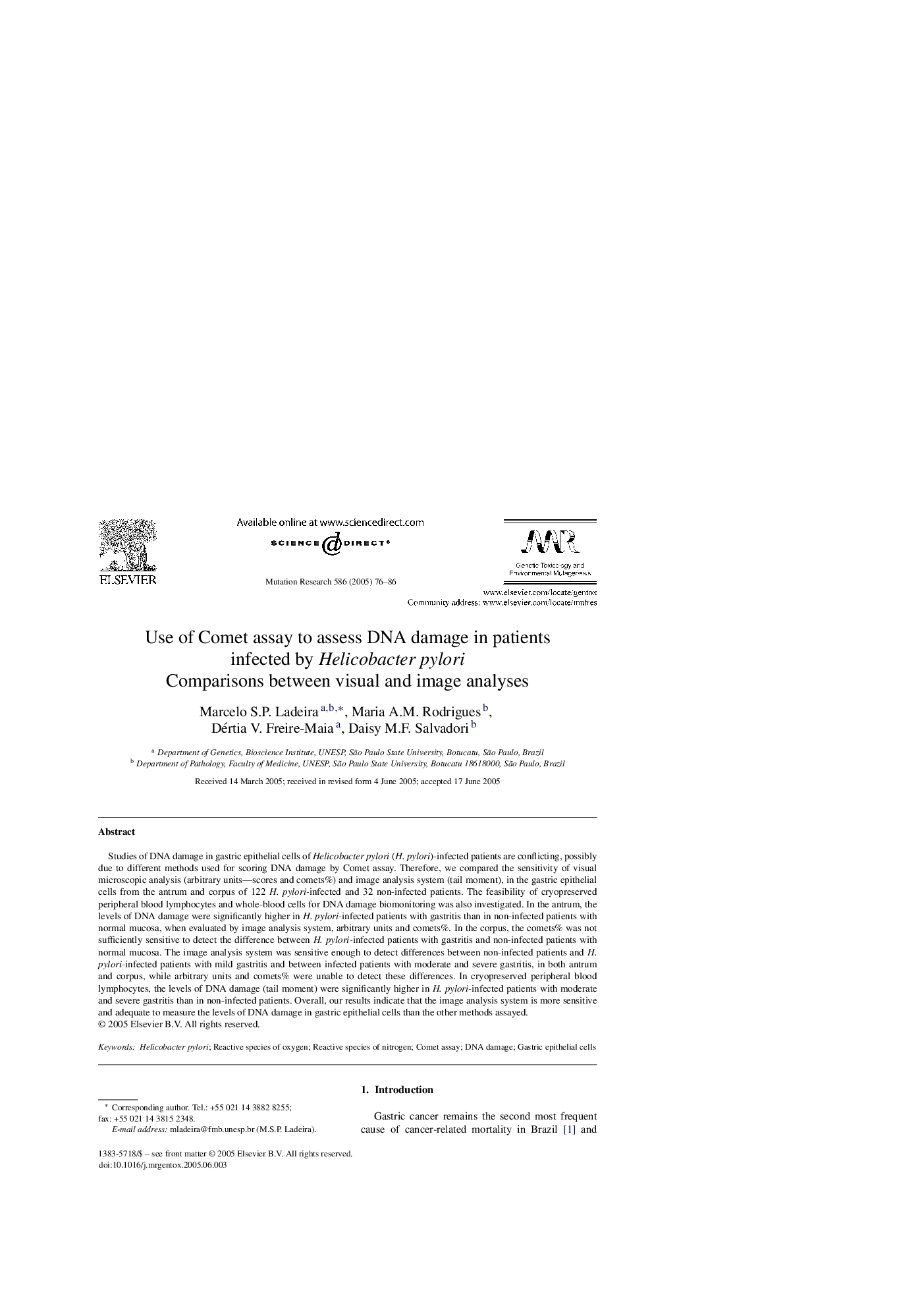| Article ID | Journal | Published Year | Pages | File Type |
|---|---|---|---|---|
| 10915077 | Mutation Research/Genetic Toxicology and Environmental Mutagenesis | 2005 | 11 Pages |
Abstract
Studies of DNA damage in gastric epithelial cells of Helicobacter pylori (H. pylori)-infected patients are conflicting, possibly due to different methods used for scoring DNA damage by Comet assay. Therefore, we compared the sensitivity of visual microscopic analysis (arbitrary units-scores and comets%) and image analysis system (tail moment), in the gastric epithelial cells from the antrum and corpus of 122 H. pylori-infected and 32 non-infected patients. The feasibility of cryopreserved peripheral blood lymphocytes and whole-blood cells for DNA damage biomonitoring was also investigated. In the antrum, the levels of DNA damage were significantly higher in H. pylori-infected patients with gastritis than in non-infected patients with normal mucosa, when evaluated by image analysis system, arbitrary units and comets%. In the corpus, the comets% was not sufficiently sensitive to detect the difference between H. pylori-infected patients with gastritis and non-infected patients with normal mucosa. The image analysis system was sensitive enough to detect differences between non-infected patients and H. pylori-infected patients with mild gastritis and between infected patients with moderate and severe gastritis, in both antrum and corpus, while arbitrary units and comets% were unable to detect these differences. In cryopreserved peripheral blood lymphocytes, the levels of DNA damage (tail moment) were significantly higher in H. pylori-infected patients with moderate and severe gastritis than in non-infected patients. Overall, our results indicate that the image analysis system is more sensitive and adequate to measure the levels of DNA damage in gastric epithelial cells than the other methods assayed.
Related Topics
Life Sciences
Biochemistry, Genetics and Molecular Biology
Cancer Research
Authors
Marcelo S.P. Ladeira, Maria A.M. Rodrigues, Dértia V. Freire-Maia, Daisy M.F. Salvadori,
